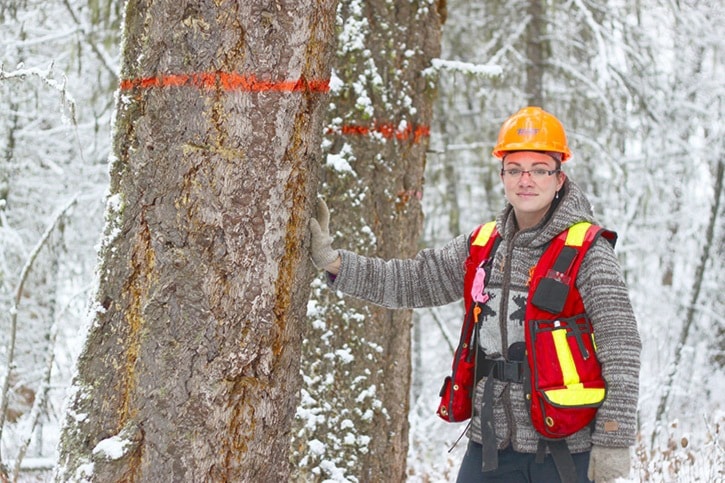The impacts from the Douglas-fir bark beetle infestation will be seen and felt within city neighbourhoods in the coming months as logging companies try to stem the damage.
“It is getting worse in the Cariboo region,” said Jodi Axelson, acting provincial entomologist with the Ministry of Forests.
“Everybody is really concerned.”
Axelson said the problem is at the point locally where it is all hands on deck in terms of the major licensees, the woodlots and getting some small scale salvage people involved in sanitation harvesting.
That work, Axelson said, involves removing red and yellow trees during the winter while the beetles are overwintering under the bark.
If trees are cut and removed from the forest before beetle flight, which is typically in April, the wood can be taken to mill yards and the beetles will be removed from the forest and the forest population.
Locally the Chilcotin Cariboo Forest Health Committee, made up of ministry staff, licence representatives, woodlot owners, community forests, and smaller scale salvage people, has been meeting regularly to tackle the problem.
Under the direction of the district manager Mike Peterson the committee has developed an integrated Douglas-fir bark beetle plan.
They have designated the high priority areas along Highway 97 and the Fraser River corridor where they feel they can be effective in sanitation harvesting.
All of the licensees have committed to sanitation harvesting areas within the high priority zone.
Tolko is actively working with the Ministry of Forests and other licensees involved in the local forest health committee to address the problem areas, said Kevin Sytsma, the company’s woodlands forestry manager.
“These beetle populations in the Douglas-fir areas have been increasing over the last several years in part to the warm winters and a result of the fire activity that occurred in the Meldrum and Dog Creek areas back in 2010.”
Tolko’s general approach is to identify and map the new infestations through use of flights and then follow up on the ground to mark the individual trees or patches that can be harvested later this fall and winter with delivery of the timber prior to breakup and beetle flight next spring.
“These are generally small scale operations utilizing hand fallers and skidders for harvesting these sites,” Sytsma said.
West Fraser said it harvested green attack trees during the winter of 2014 and 2015.
“Currently we have Douglas-fir trap trees that were felled March of this year in a number of areas we harvested in that include Mackin Creek, Hanceville and Riske Creek to attract and contain Douglas-fir bark beetle,” said planning forester Robert Barta. The plan is to remove the trap trees and any spill-over or new attack this fall and winter.
Crews also harvested infested wind-thrown Douglas-fir, from this past spring’s storms, in the Skelton area north of Beaver Lake Road.
“The goal is to process this wood through the mills prior to beetle emerging spring 2016. We are working with other licensees and the Ministry of Forests, Lands and Natural Resource Operations in a coordinated effort to mitigate the potential impact to the mid-term timber supply.”
Future plans are to continue with harvesting and trap trees as the ministry monitors beetle populations throughout the Cariboo.
Last winter Axelson helped develop a fact sheet to help people identify and treat Douglas-fir bark beetle on their private land, that can be found at https://www.for.gov.bc.ca/dqu/DouglasFirBeetles_factsheet_FLNRO_Web.pdf.
